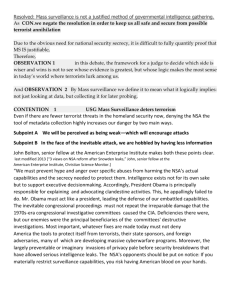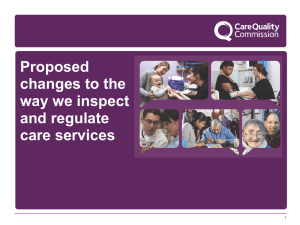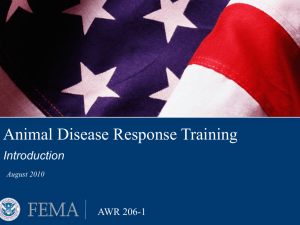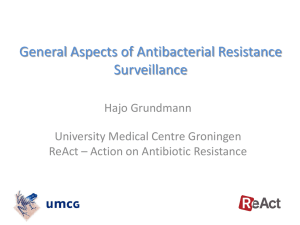Link to Word file
advertisement
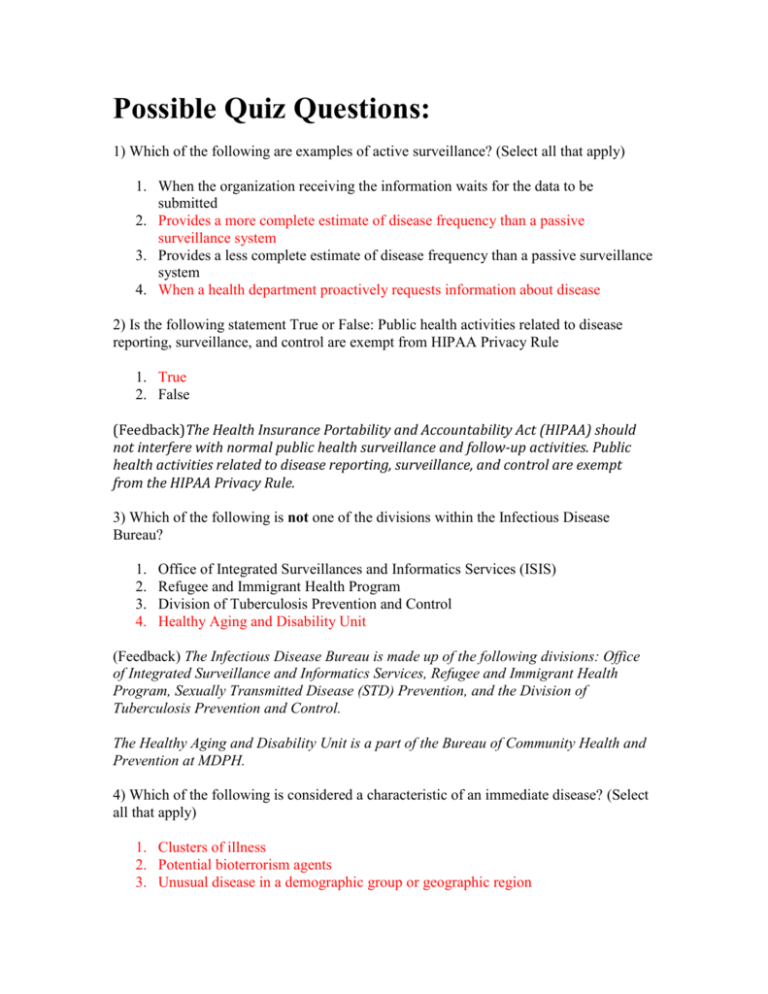
Possible Quiz Questions: 1) Which of the following are examples of active surveillance? (Select all that apply) 1. When the organization receiving the information waits for the data to be submitted 2. Provides a more complete estimate of disease frequency than a passive surveillance system 3. Provides a less complete estimate of disease frequency than a passive surveillance system 4. When a health department proactively requests information about disease 2) Is the following statement True or False: Public health activities related to disease reporting, surveillance, and control are exempt from HIPAA Privacy Rule 1. True 2. False (Feedback)The Health Insurance Portability and Accountability Act (HIPAA) should not interfere with normal public health surveillance and follow-up activities. Public health activities related to disease reporting, surveillance, and control are exempt from the HIPAA Privacy Rule. 3) Which of the following is not one of the divisions within the Infectious Disease Bureau? 1. 2. 3. 4. Office of Integrated Surveillances and Informatics Services (ISIS) Refugee and Immigrant Health Program Division of Tuberculosis Prevention and Control Healthy Aging and Disability Unit (Feedback) The Infectious Disease Bureau is made up of the following divisions: Office of Integrated Surveillance and Informatics Services, Refugee and Immigrant Health Program, Sexually Transmitted Disease (STD) Prevention, and the Division of Tuberculosis Prevention and Control. The Healthy Aging and Disability Unit is a part of the Bureau of Community Health and Prevention at MDPH. 4) Which of the following is considered a characteristic of an immediate disease? (Select all that apply) 1. Clusters of illness 2. Potential bioterrorism agents 3. Unusual disease in a demographic group or geographic region 4. Diseases with high mortality rates (Feedback) Immediate diseases usually have one or more of the following attributes: clusters of illness, diseases requiring prompt administration of agents to protect or prevent the spread, diseases with high mortality rates, potential bioterrorism agents, or unusual diseases in a demographic group or geographic region. 5) Suppose the SIR of breast cancer in Pleasantville, Massachusetts is 140. How would you interpret this? 1. 2. 3. 4. The incidence of breast cancer in Pleasantville is lower than expected The incidence of breast cancer in Pleasantville is higher than expected The incidence of breast cancer in Pleasantville is exactly what one would expect There is not enough information given to determine this (Feedback) A Standardized Incidence Ratio (SIR) greater than 100 indicates that the incidence for a certain type of cancer in the specified location is higher than expected, based on statewide average age-specific incidence rates. 6) Which of the following are the goals of a surveillance system? (Select all that apply) 1. Monitor disease trends over time 2. Identify high risk groups 3. Detect increase in disease occurrence 4. Establish baseline disease data 7) The acronym RIHP stands for 1. The Refugee and Immunization Health Program 2. The Real Immigration Help Program 3. The Refugee and Immigrant Health Program 4. The Resource and Informatics Health Program (Feedback) The Refugee and Immigrant Health Program (RIHP) was established to improve the general health status of refugee and immigrants living in Massachusetts. 8) In order for a disease case to be considered confirmed, probable, or suspect, the case must be experiencing symptoms: 1. True 2. False (Feedback) The specific case definitions depend on the disease. Sometimes cases may not be experiencing any symptoms but may meet the case definition of confirmed, probable, or suspect. 9) Which of the following is not a characteristic of MAVEN? 1. Secure web-based system 2. Public access for all Massachusetts citizens 3. Stores clinical and laboratory information 4. Real-time data exchange 10) Which of the following are involved in the disease reporting pathway in Massachusetts? (Select all that apply) 1. Healthcare providers 2. Laboratories 3. Local Boards of Health 4. Massachusetts Department of Public Health (Feedback) The disease reporting pathway in Massachusetts is complex and requires communication from a lot of different entities! Healthcare providers, clinical laboratories, local boards of health, the Hinton state laboratories, and the Massachusetts Department of Health all play important roles in the successful reporting of disease. 11) In the traditional method of disease reporting, an organization receiving information typically waits for the data to be submitted. This is an example of 1. An active surveillance system 2. A passive surveillance system 3. An enhanced passive surveillance system 4. A passé surveillance system (Feedback) Passive surveillance is considered the traditional method of disease reporting. Passive surveillance is advantageous because it occurs continuously and requires few resources! 12) Which of the following is not something that surveillance data is used for? 1. Monitoring disease trends over time 2. Establishing baseline disease data 3. Identifying high-risk groups 4. Diagnosing cases of disease (Feedback) The case definitions used for surveillance data are based on information disseminated by the CDC in conjunction with the Council of State and Territorial Epidemiologists (CSTE). It is important to remember that these case definitions are used for the collection of surveillance data, and they should not be used for clinical diagnosis. 13) What is the role of the LBOH in infectious disease surveillance reporting pathway? (Select all that apply) 1. To report cases to MDPH 2. To conduct case investigations and implement control measures 3. To submit weekly disease data to the CDC 4. To notify the patient of diagnosis (Feedback) The infectious disease reporting pathway requires the communication between many entities, including health care providers, clinical laboratories, local boards of health, MDPH, and the Hinton state laboratory. Specifically, the local board of health is responsible for: -Reporting cases to MDPH and coordinating follow up with MDPH -Conducting case investigations and implementing disease control measures -Submitting the CRF to ISIS -Communicating reports for cases from other communities to that LBOH or MDPH -Establishing relationships with healthcare providers and surrounding boards of health. It is the health care providers’ responsibility to notify the patient of their diagnosis. Additionally, it is the responsibility of MDPH to submit weekly disease data to the CDC. 14) Which of the following is not one of the primary purposes of the Massachusetts Cancer Registry? 1. To help citizens to choose an oncologist 2. To examine the incidence of cancer in specific locations 3. To monitor the incidence of cancer in specific populations 4. To provide information that enables analysts to monitor environmental and occupational hazards (Feedback) The Massachusetts Cancer Registry collects information on all new cancer cases in the state. The registry serves many purposes, including: -Examining the incidence of cancer in specific locations -Monitoring the incidence of cancer in specific populations -Providing information that enables analysts to monitor environmental and occupational hazards -Collecting information that allows analysts to examine cancer trends over time 15) There are many data sources for surveillance data, including: (Select all that apply) 1. Birth and death certificates 2. Disease registries 3. Infectious disease surveillance data 4. Occupational disease and injury data (Feedback) Many sources of data are utilized in monitoring the health of populations and exploring how disease frequency changes over time. Infectious disease surveillance data, birth and death certificates, disease registries, hospital discharge registries, occupational disease and injury data, health and social indicators, and commercial data are just some among the many sources of data that can be used.

